Inter-Turn Breakdown Fault Analysis and Winding Structure Optimisation of Winding of Dry-Type Transformers in Wind Farms
Abstract
:1. Introduction
2. Simulation Modelling of a Transformer Considering the Primary and Secondary Windings
2.1. MTL Model Considering Primary and Secondary Windings
2.2. Distribution Parameter Model for Transformers
2.3. Calculation of Distribution Parameters
2.3.1. Calculation of Capacitance Parameters
2.3.2. Calculation of Inductance and Resistance Parameters
3. Transient Voltage Distribution of the Transformer Considering the Effect of the Secondary Side
3.1. Windings Voltage Distribution under Lightning Overvoltage
3.2. Windings Voltage Distribution under Extra-Fast Transient Overvoltage
4. Transformer Winding Structure Optimisation Analysis
4.1. Windings Voltage Distribution after Structural Optimisation
4.2. Test Verification
5. Conclusions
- (1)
- The maximum intercake voltage under lightning strikes is located between line cakes 1 and 2 with an amplitude of 20.43 kV; the maximum interlayer voltage is located at D10-E11 of line cake 1 with an amplitude of 5.282 kV, and the insulation margin in this case reaches 12.8 kV and is not prone to breakdown.
- (2)
- The maximum inter-pancake voltage under extra-fast transient overvoltage is located between pancake 1 and 2 with an amplitude of 32.06 kV; the maximum inter-layer voltage is located at D2-E3 of pancake 1 with an amplitude of 11.6 kV, which meets the insulation design requirements. However, as the insulation margin of the transformer decreases under long-term operation, the maximum interlayer voltage is close to the insulation breakdown voltage. The winding structure therefore needs to be optimised to make the insulation margin larger.
- (3)
- By optimising the winding structure, the maximum interlayer overvoltage was changed from 11.6 kV to 9.104 kV and its insulation breakdown was reduced by 24.1%.
- (4)
- The transformer was subjected to a shock voltage test, which resulted in insulation breakdown at the first end of the high-voltage winding before structural optimisation, while the high-voltage winding after structural optimisation was left intact. This experiment demonstrates the accuracy of the simulation results.
Author Contributions
Funding
Institutional Review Board Statement
Informed Consent Statement
Data Availability Statement
Conflicts of Interest
References
- Theocharis, A.; Popov, M.; Seibold, R.; Voss, S.; Eiselt, M. Analysis of Switching Effects of Vacuum Circuit Breaker on Dry-Type Foil-Winding Transformers Validated by Experiments. IEEE Trans. Power Deliv. 2014, 30, 351–359. [Google Scholar] [CrossRef]
- Zhou, Q.; Cheng, Y.; Bian, X.; Liu, F.; Zhao, Y. Analysis of Restrike Overvoltage of Circuit Breakers in Offshore Wind Farms. IEEE Trans. Appl. Supercond. 2016, 26, 1–5. [Google Scholar] [CrossRef]
- Sarajčev, P.; Goić, R. A Review of Current Issues in State-of-Art of Wind Farm Overvoltage Protection. Energies 2011, 4, 644–668. [Google Scholar] [CrossRef] [Green Version]
- Nie, H.; Liu, X.; Wang, Y.; Yao, Y.; Gu, Z.; Zhang, C. Breaking Overvoltage of Dry-Type Air-Core Shunt Reactors and its Cumulative Effect on the Interturn Insulation. IEEE Access 2019, 7, 55707–55720. [Google Scholar] [CrossRef]
- Zang, Y. Research on Wave Process and Winding Model of Extra-High Voltage Power Transformer. Master’s Thesis, Shandong University, Jinan, China, 2017. [Google Scholar]
- Chen, L. Hollow Reactor Wave Process Calculation and Result Analysis. Master’s Thesis, Harbin Institute of Technology, Harbin, China, 2020. [Google Scholar]
- Yang, Y.; Wang, Z. Frequency domain segmentation modeling of large power transformer coils for ultra-fast transient simulation. Chin. J. Electr. Eng. 2010, 30, 66–71. [Google Scholar]
- Chen, Z.; Zhang, K.; Ou, F. Modeling of transformer winding concentration parameters under the action of VFTO. Transformer 2013, 50, 10–15. [Google Scholar]
- Chen, M. Optimum Design of Multi-band Transformer with Multi-section for Two Arbitrary Complex Frequency-dependent Impedances. Chin. J. Electron. 2012, 21, 160–164. [Google Scholar]
- Xie, Q.; Li, J.; Wang, T. Study on the wave process of 800 kV converter transformer scaling model. Transformer 2016, 53, 12–16. [Google Scholar]
- Zupan, T.; Trkulja, B.; Obrist, R.; Franz, T.; Cranganu-Cretu, B.; Smajic, J. Transformer Windings’ RLC Parameters Calculation and Lightning Impulse Voltage Distribution Simulation. IEEE Trans. Magn. 2015, 52, 1–4. [Google Scholar] [CrossRef]
- Mi, Y.; Liu, L.; Deng, S.; Gui, L.; Ouyang, W. Electrothermal aging characteristics of epoxy resin under bipolar exponential decay pulse voltage and its insulation life evaluation based on Cole-Cole model. IEEE Trans. Dielectr. Electr. Insul. 2019, 26, 784–791. [Google Scholar] [CrossRef]
- Xin, Y.; Zhao, B.; Liang, Q.; Zhou, J.; Qian, T.; Yu, Z.; Tang, W. Development of Improved Suppression Measures Against Reignition Overvoltages Caused by Vacuum Circuit Breakers in Offshore Wind Farms. IEEE Trans. Power Deliv. 2021, 37, 517–527. [Google Scholar] [CrossRef]
- Awad, E.A.; Badran, E.A.; Youssef, F.M. Mitigation of temporary overvoltages in weak grids connected to DFIG-based wind farms. J. Electr. Syst. 2014, 10, 431–444. [Google Scholar]
- Smugala, D.; Piasecki, W.; Ostrogorska, M.; Florkowski, M.; Fulczyk, M.; Granhaug, O. Wind Turbine Transformers Protection Method Against High-Frequency Transients. IEEE Trans. Power Deliv. 2015, 30, 853–860. [Google Scholar] [CrossRef]
- Gabrić, P.; Mikulecky, A.; Ilić, D. A concept for experimental testing of oil-barrier insulation system. Teh. Vjesn.-Tech. Gaz. 2017, 24, 355–362. [Google Scholar] [CrossRef] [Green Version]
- Wang, W.; Liu, Y.; He, J.; Ma, D.; Hu, L.; Yu, S.; Li, S.; Liu, J. An Improved Design Procedure for a 10 kHz, 10 kW Medium-Frequency Transformer Considering Insulation Breakdown Strength and Structure Optimization. IEEE J. Emerg. Sel. Top. Power Electron. 2022, 10, 3525–3540. [Google Scholar] [CrossRef]
- Li, P. Study on the Distribution of Lightning Shock and VFTO on Transformer Windings. Master’s Thesis, Taiyuan University of Technology, Taiyuan, China, 2017. [Google Scholar]
- Wu, M. Power Transformer Winding Wave Process and Optimization of Winding Longitudinal Insulation Structure. Master’s Thesis, Southeast University, Nanjing, China, 2016. [Google Scholar]


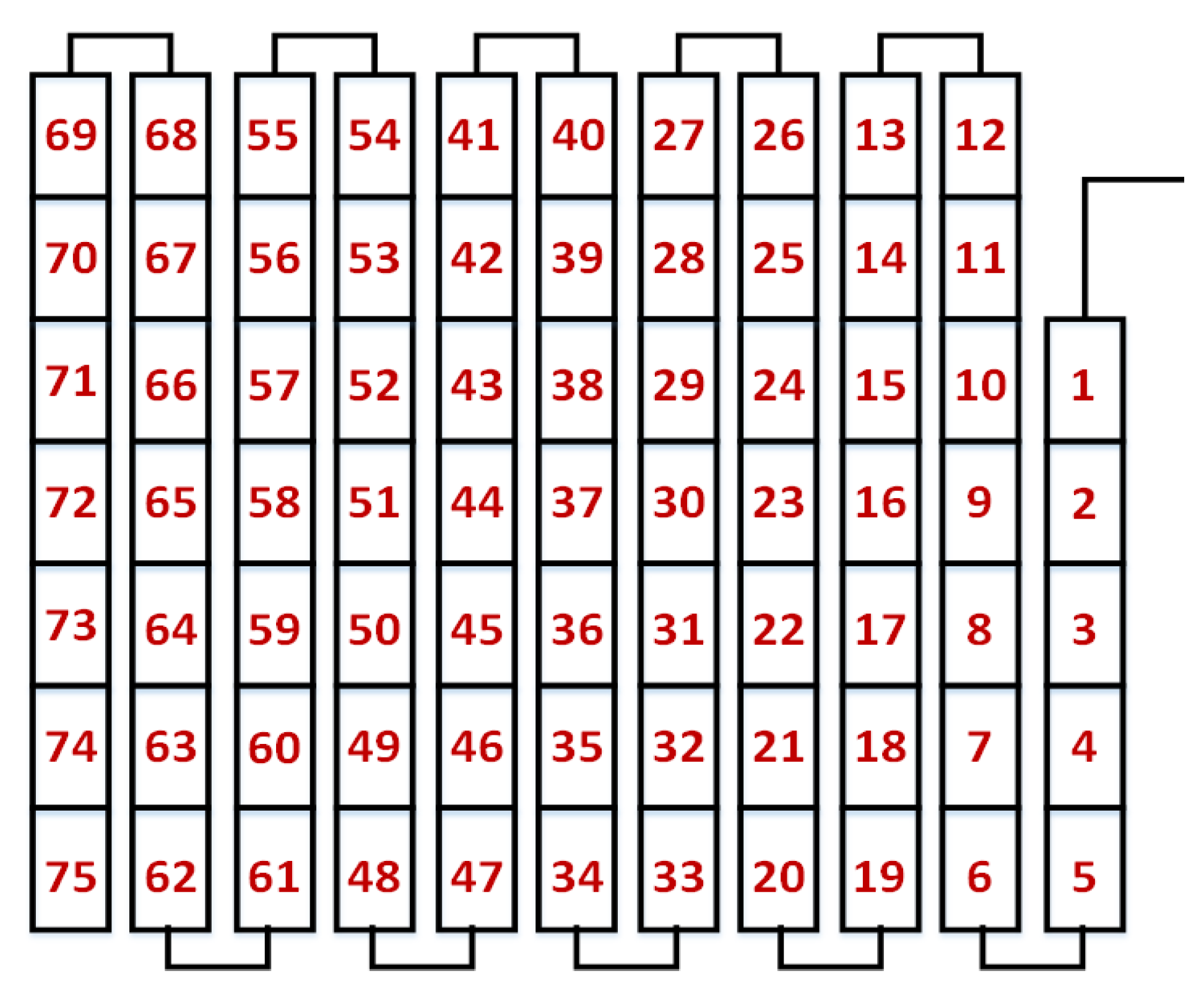




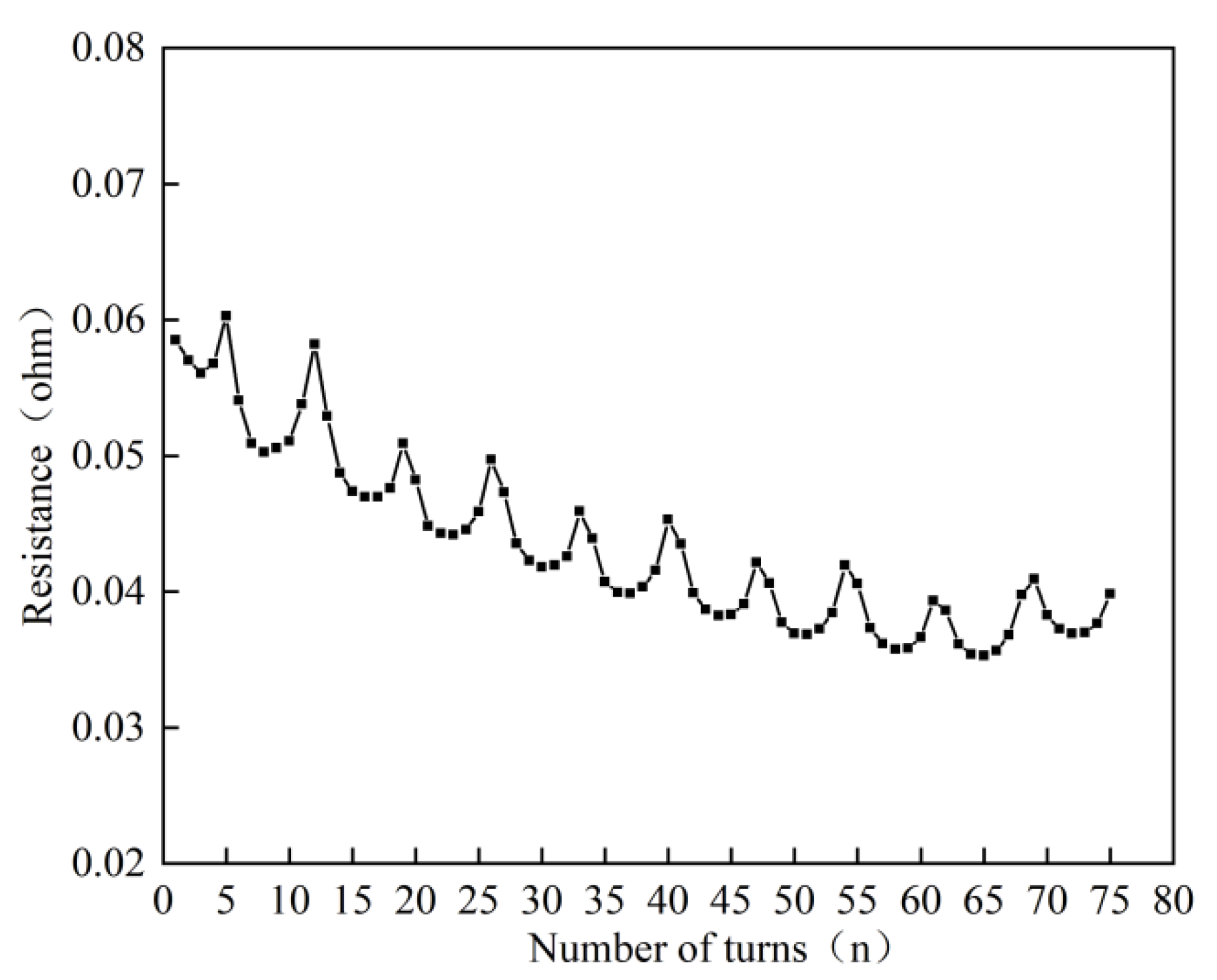



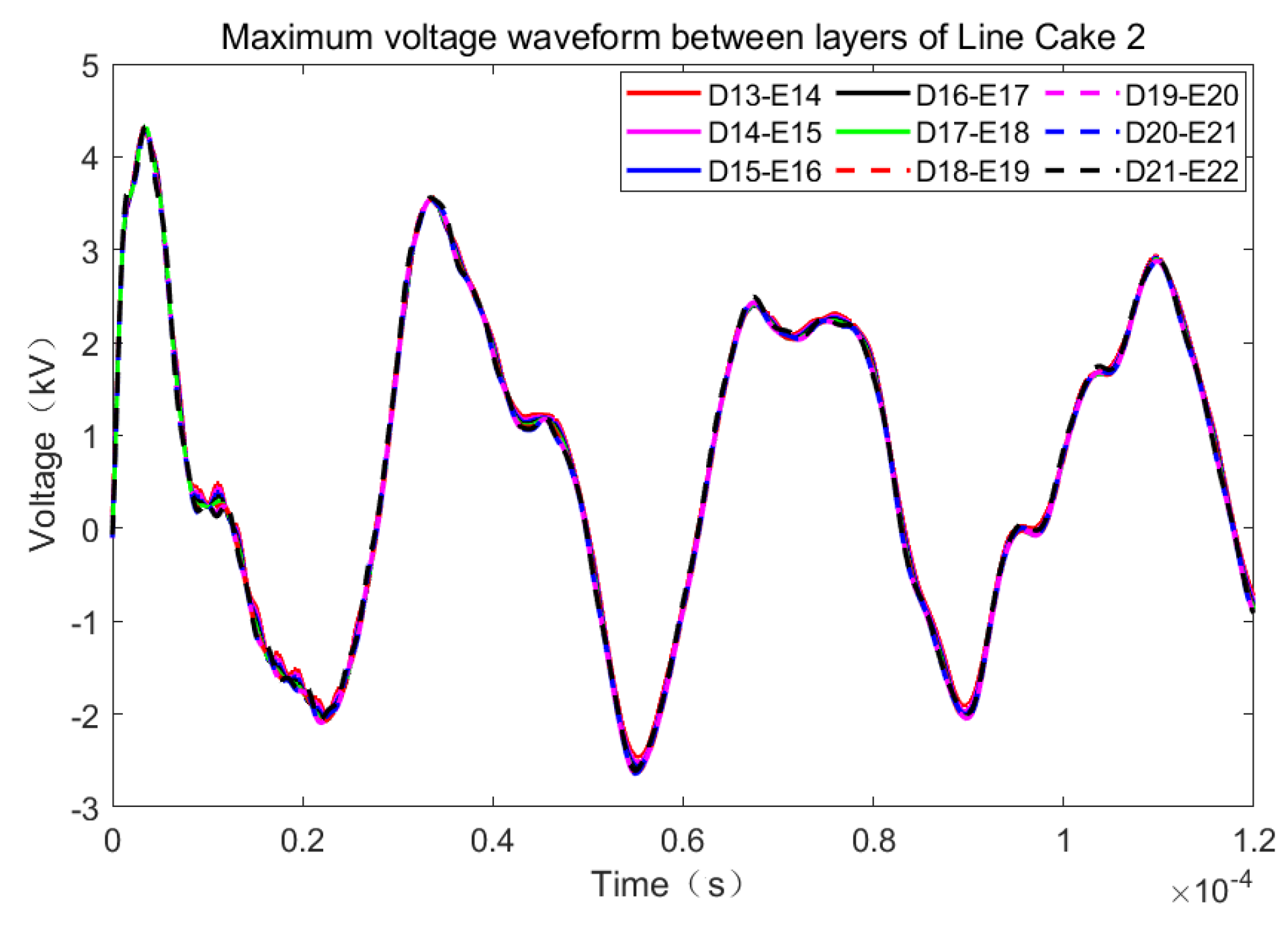

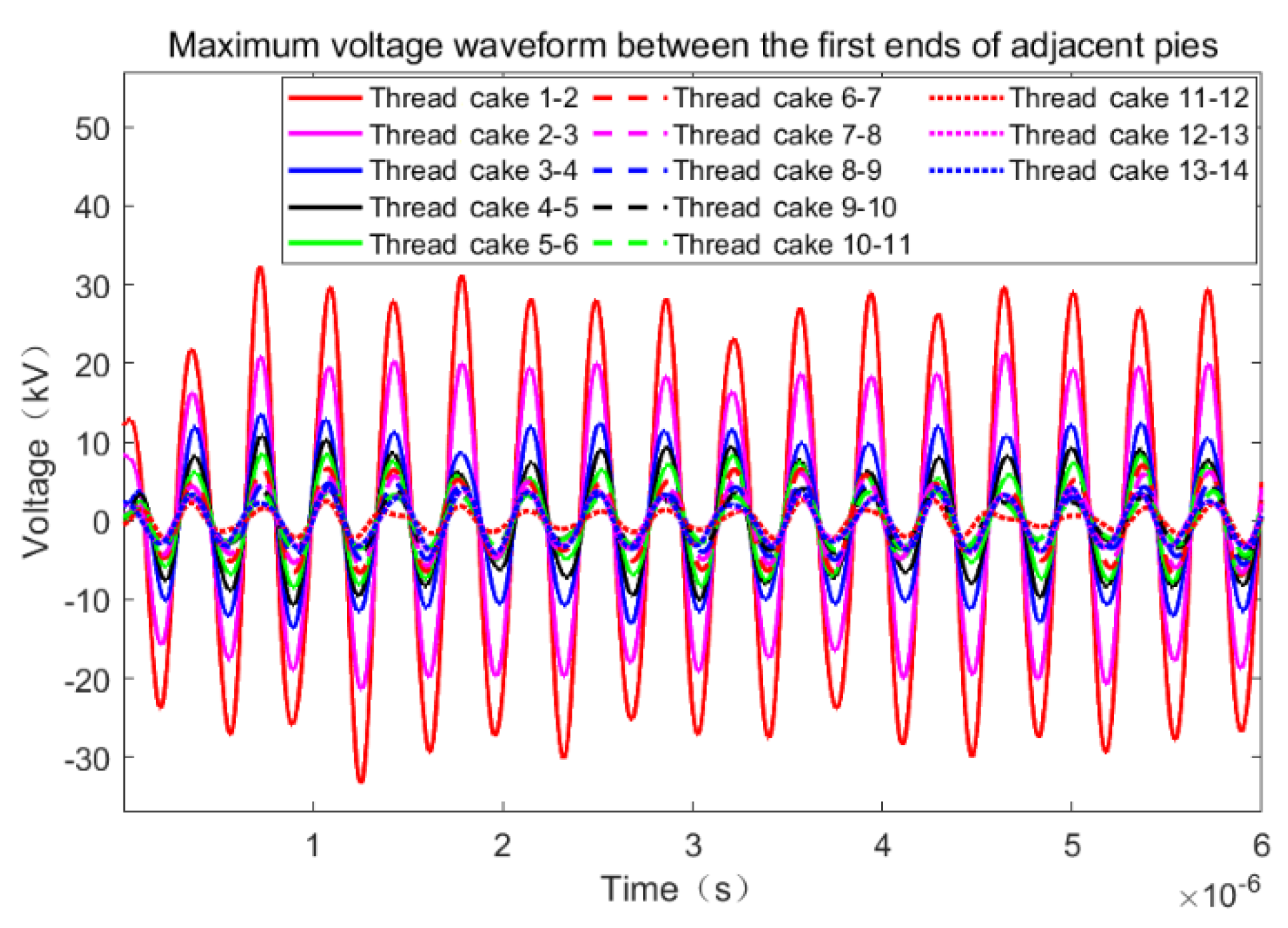




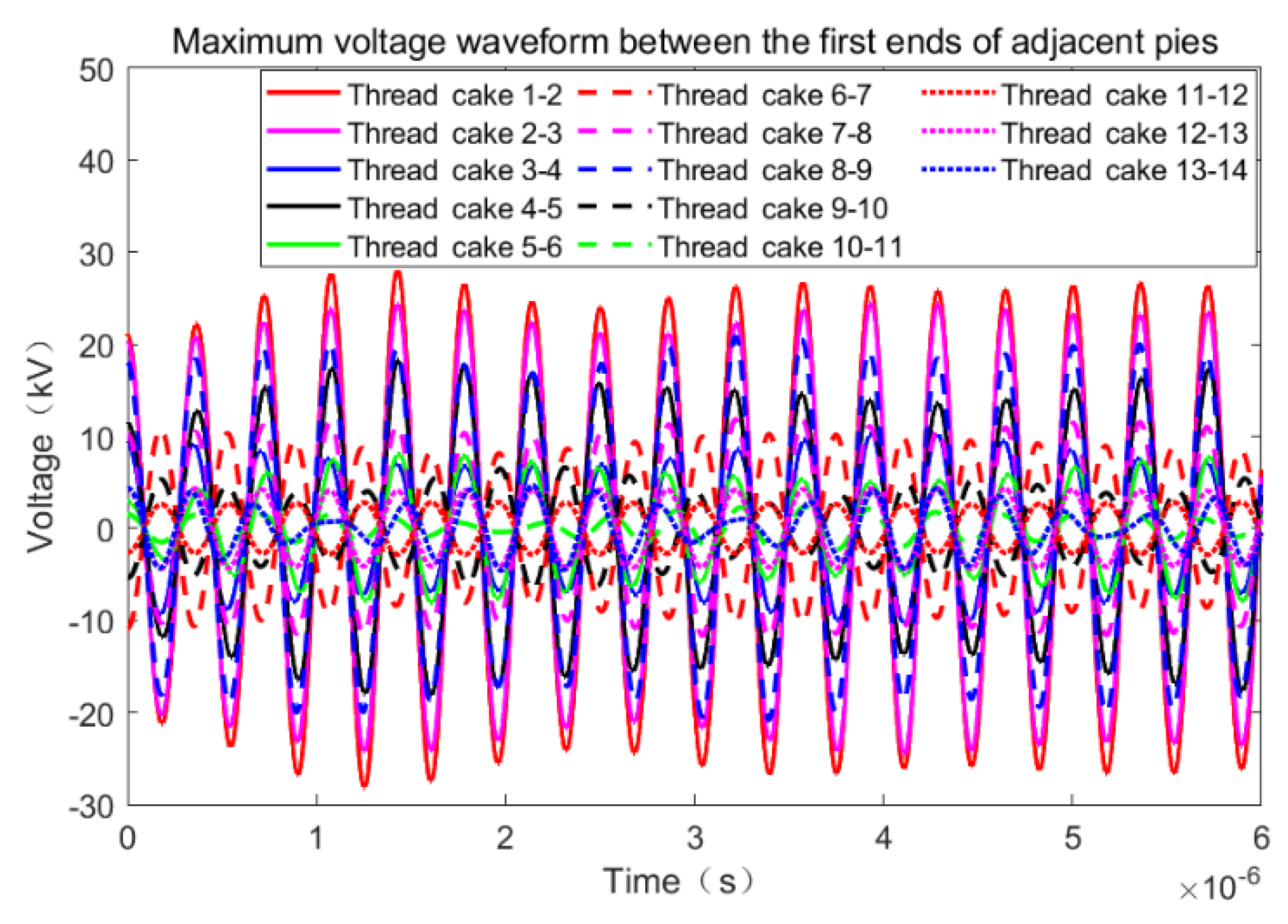
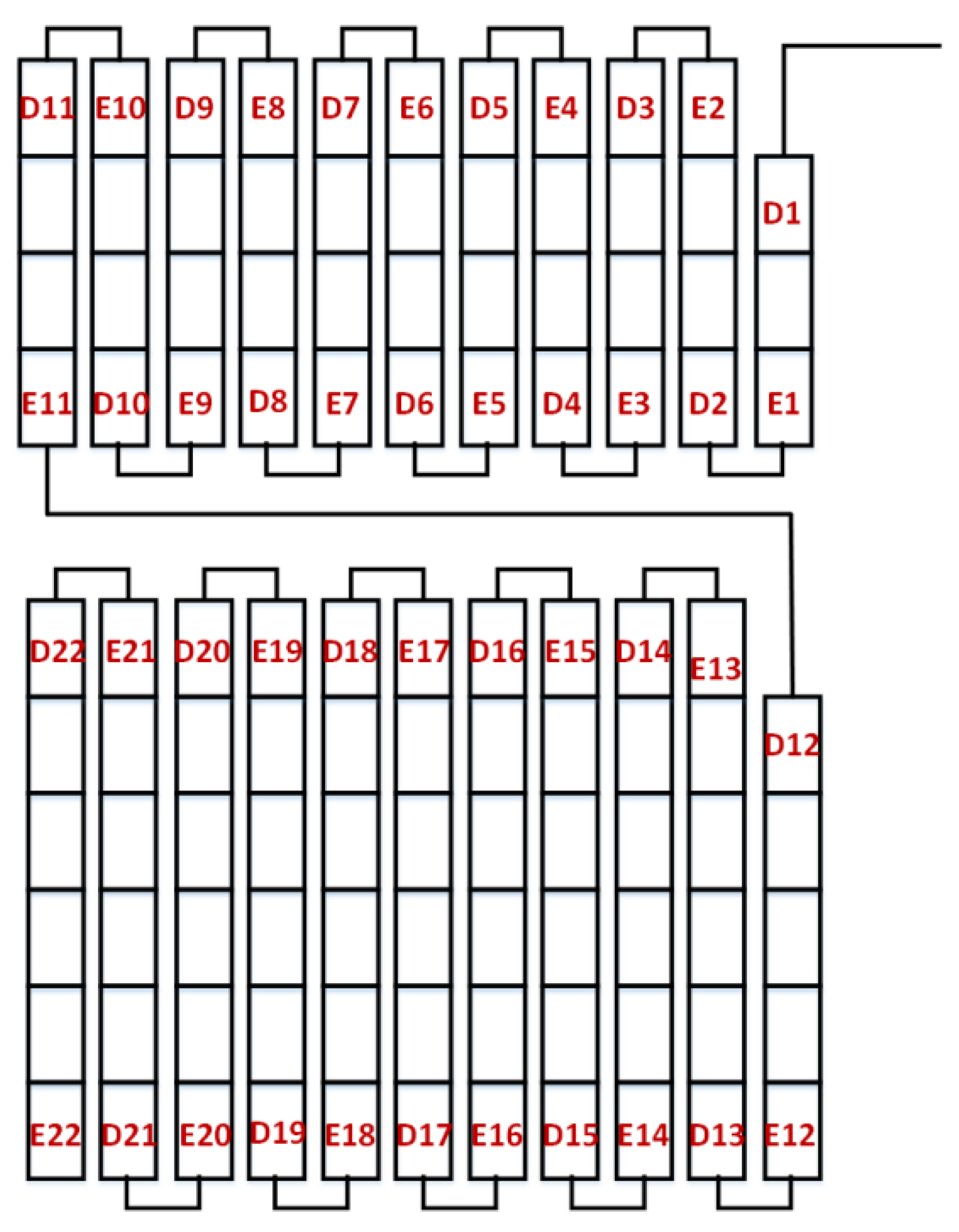



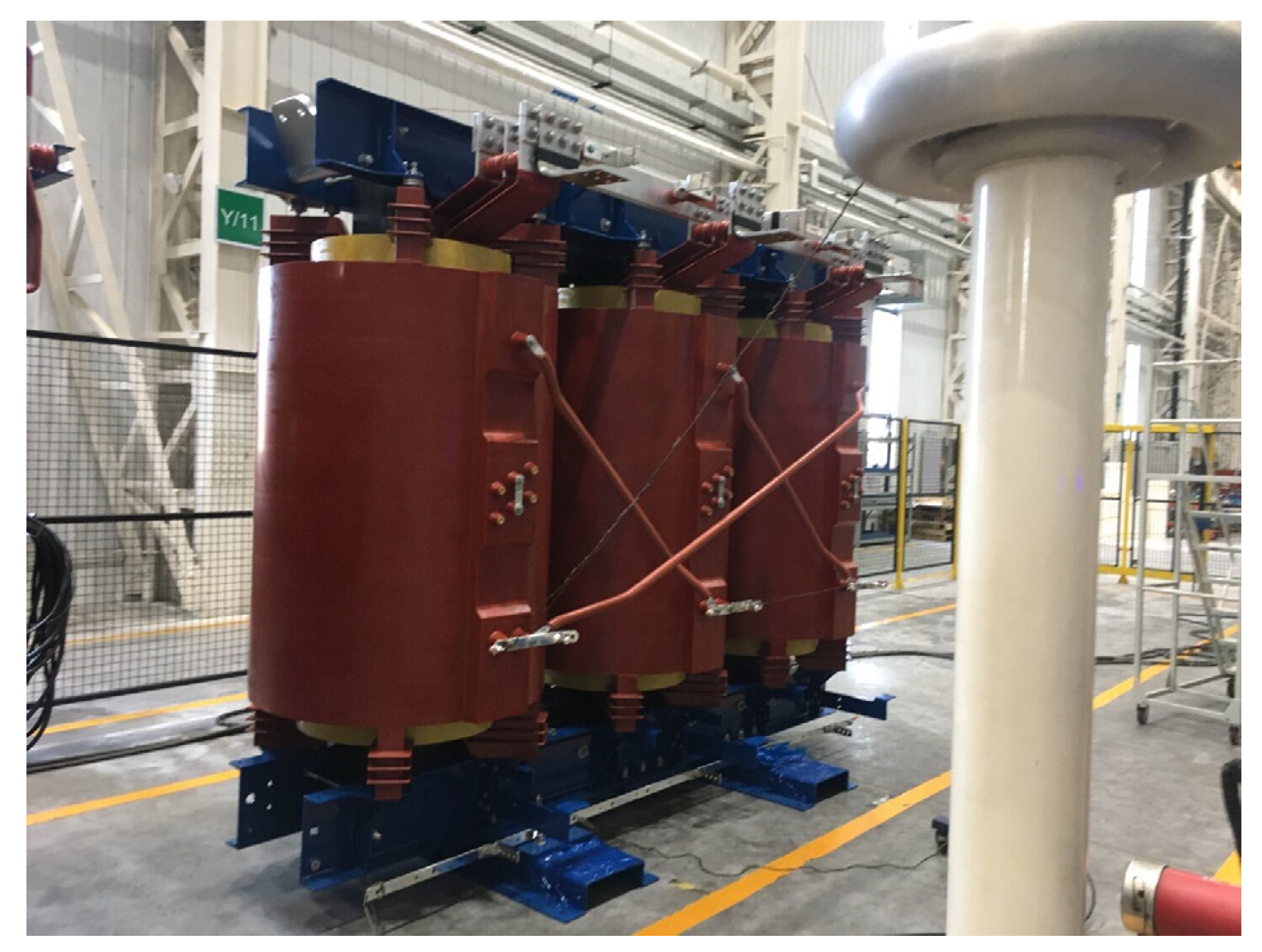
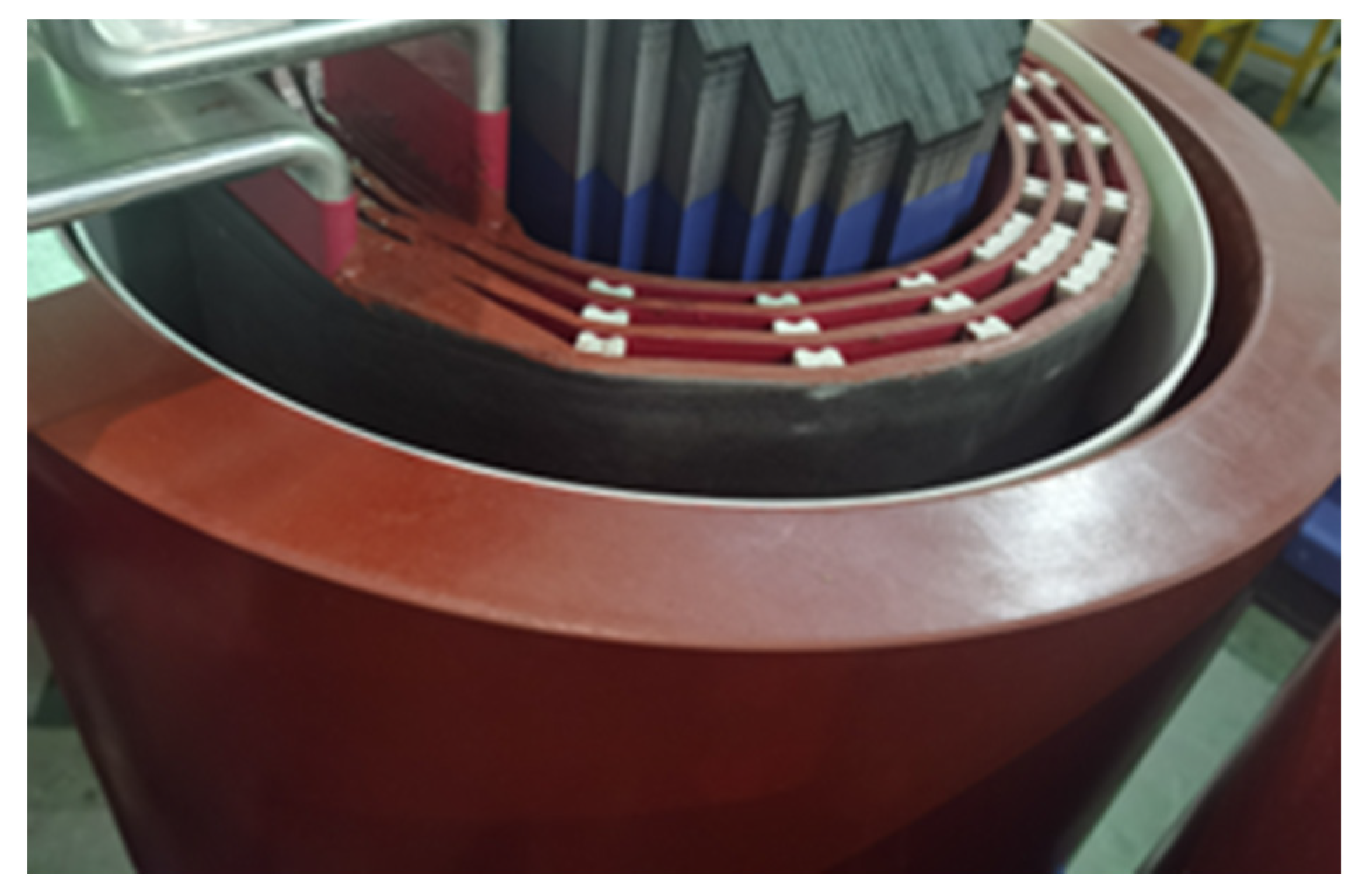

| Electrical Conductivity (20 °C) (S/m) | Relative Permeability | Relative Dielectric Constant | Materials | |
|---|---|---|---|---|
| Conductors | 3.45 × 107 | 1 | 1 | Aluminium |
| Insulation | 0 | 1 | 3.6 | Epoxy resin |
| Iron cores | 2 × 106 | 4 × 103 | 1 | Silicon steel |
| Air | 0 | 1 | 1 | - |
| Parameter | Data |
|---|---|
| Frequency (Hz) | 50 |
| HV rated power (kVA) (AF) | 4778 |
| HV rated voltage (V) | 33,000 |
| HV rated current (A) | 83 |
| HV BIL (KV) | 170 |
| HV AC (KV) (1500 m) | 70 |
| MV rated power (kVA) (AF) | 4157 |
| MV rated voltage (V) | 6000 |
| MV rated current (A) | 400 |
| MV BIL (KV) | 60 |
| MV AC (KV) (1500m) | 20 |
| LV rated power (kVA) (AF) | 838 |
| LV rated voltage (V) | 690 |
| LV rated current (A) | 701 |
| LV BIL (KV) | - |
| LV AC (KV) (1500 m) | 3 |
| HV-MV impedance (based on 4779 kVA) (%) | 8.5 ± 10 |
| HV-LV impedance (based on 4779 kVA) (%) | 14.6 ± 10 |
| MV-LV impedance (based on 4779 kVA ) (%) | 3~6 |
| Sound power level | <95 dBA |
| Efficiency (PEl)(%) | ≥99.354 |
| Insulation class/temperature rise | F/75K |
| Winding Construction | When the First Pie Is 75 Turns | When the First Pie Is 43 Turns |
|---|---|---|
| Inter-segment (max. voltage) | 32.06 kV | 28.3 kV |
| Position | Between the first and second pie | Between the first and second pie |
| Interlayer (max. voltage) | 11.6 kV | 9.104 kV |
| Position | Between D2 and E3 | Between D2 and E3 |
| Inter-turn (max. voltage) | 6.653 kV | 3.389 kV |
| Position | Between turns 5 and 6 | Between turns 3 and 4 |
Disclaimer/Publisher’s Note: The statements, opinions and data contained in all publications are solely those of the individual author(s) and contributor(s) and not of MDPI and/or the editor(s). MDPI and/or the editor(s) disclaim responsibility for any injury to people or property resulting from any ideas, methods, instructions or products referred to in the content. |
© 2023 by the authors. Licensee MDPI, Basel, Switzerland. This article is an open access article distributed under the terms and conditions of the Creative Commons Attribution (CC BY) license (https://creativecommons.org/licenses/by/4.0/).
Share and Cite
Pu, Z.; Yu, X.; Wang, Y.; Liu, H.; Feng, Z. Inter-Turn Breakdown Fault Analysis and Winding Structure Optimisation of Winding of Dry-Type Transformers in Wind Farms. Energies 2023, 16, 2012. https://doi.org/10.3390/en16042012
Pu Z, Yu X, Wang Y, Liu H, Feng Z. Inter-Turn Breakdown Fault Analysis and Winding Structure Optimisation of Winding of Dry-Type Transformers in Wind Farms. Energies. 2023; 16(4):2012. https://doi.org/10.3390/en16042012
Chicago/Turabian StylePu, Ziheng, Xinyun Yu, Yaoqiang Wang, Hao Liu, and Zihao Feng. 2023. "Inter-Turn Breakdown Fault Analysis and Winding Structure Optimisation of Winding of Dry-Type Transformers in Wind Farms" Energies 16, no. 4: 2012. https://doi.org/10.3390/en16042012






